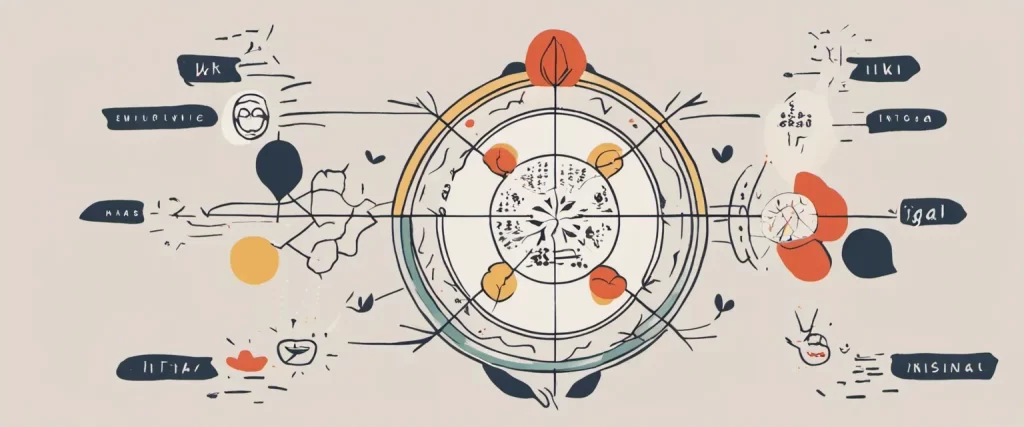
What is Positive Thinking
Positive thinking is the practice of focusing on optimistic thoughts and expectations, as well as maintaining a positive attitude and mindset. It involves deliberately choosing to see the bright side of situations, believing in one’s ability to overcome challenges and achieve success, and cultivating a positive outlook on life. Positive thinking is often associated with improved mental and physical health, increased resilience, enhanced problem-solving skills, and improved relationships. It is a mindset that can be developed and nurtured through self-reflection, gratitude, affirmations, and the intentional redirection of negative thoughts.
What Can We Get From Positive Thinking?
Positive thinking can bring several benefits, including:
1. Improved mood: Positive thinking can help improve your overall mood by reducing feelings of stress, anxiety, and depression. It allows you to focus on more positive aspects of life and boosts feelings of happiness and contentment.
2. Increased resilience: Positive thinking helps build emotional resilience, enabling you to effectively cope with setbacks and challenges. It allows you to maintain a positive outlook even in difficult times and bounce back more quickly from adversity.
3. Enhanced physical health: Research suggests that positive thinking can have a positive impact on physical health. It can lower stress levels, boost the immune system, reduce the risk of cardiovascular diseases, and increase longevity.
4. Better relationships: Positive thinking promotes a more optimistic and open mindset, which can lead to healthier and more fulfilling relationships. It helps foster empathy, compassion, and understanding, improving communication and connection with others.
5. Increased productivity and success: Positive thinking enhances focus, motivation, and creativity, leading to increased productivity and overall performance. It also cultivates a mindset that is more open to opportunities and solutions, enhancing the chances of success in various areas of life.
6. Improved self-confidence: Positive thinking helps boost self-esteem and self-worth, leading to increased confidence in one’s abilities. It allows individuals to believe in themselves and their potential, encouraging them to take on new challenges and pursue their goals.
7. Better mental well-being: Positive thinking contributes to overall mental well-being by promoting positive self-talk, reducing negative thought patterns, and fostering a more optimistic perspective on life. It cultivates a sense of gratitude and appreciation, improving overall mental health and happiness.
It’s important to note that positive thinking alone may not solve all problems or guarantee success, but it can significantly improve one’s mindset, resilience, and overall well-being, leading to a more fulfilling and satisfying life.
Strategies in Learning Positive Thinking
1. Recognize and challenge negative thoughts: Become aware of negative thoughts that arise in your mind and challenge them by questioning their validity or replacing them with positive alternatives. This can help you develop a more positive mindset.
2. Surround yourself with positive influences: Choose to spend time with positive and supportive people who uplift you. Engage in activities or hobbies that bring you joy and fulfillment.
3. Practice daily affirmations: Repeat positive affirmations to yourself every day. These are positive statements about yourself or your life that can help reprogram your subconscious mind to focus on the positive.
4. Focus on gratitude: Practice gratitude by regularly listing or journaling about the things you are grateful for in your life. This can help shift your focus from negativity to appreciation, fostering a positive mindset.
5. Visualize your desired outcomes: Imagine and visualize yourself achieving your goals or living the life you desire. This can help you maintain a positive outlook and motivation to work towards your aspirations.
6. Practice self-care: Take care of your physical, mental, and emotional well-being. Engage in activities that make you feel good, such as exercising, practicing mindfulness or meditation, getting enough sleep, and eating a balanced diet.
7. Limit exposure to negative influences: Be mindful of the media you consume, such as news or social media, and limit exposure to negative content that can impact your mindset. Instead, seek out positive and uplifting content.
8. Focus on solutions: When faced with challenges or problems, focus on finding solutions rather than dwelling on the negative aspects. Train your mind to look for the positive opportunities and lessons within difficulties.
9. Celebrate small achievements: Recognize and celebrate your small wins and accomplishments, no matter how minor they may seem. This helps reinforce a positive mindset and builds confidence.
10. Learn from setbacks: Instead of viewing setbacks as failures, see them as opportunities for growth and learning. Embrace challenges as valuable experiences that can lead to personal development.
Remember, developing a positive thinking mindset takes time and practice. Be patient with yourself and actively work on implementing these strategies into your daily life.

Ikigai by Héctor García
Summary
“Ikigai: The Japanese Secret to a Long and Happy Life” by Héctor García, co-authored with Francesc Miralles, explores the concept of ikigai, which means “a reason for being” or “a reason to wake up in the morning” in Japanese. The book delves into the lives of the people of Ogimi, a village known for having the highest number of centenarians in the world, to uncover the secrets to their longevity and happiness.
Combining aspects of self-help, spirituality, and cultural exploration, the book explores how incorporating elements of ikigai into our own lives can bring a sense of purpose, joy, and fulfillment. The authors discuss the four pillars of ikigai: passion, mission, vocation, and profession, which, when balanced, can help individuals find their true calling and unlock a more meaningful existence.
Throughout the book, the authors provide practical advice and anecdotes, sharing insights from the people of Ogimi and prominent figures from various fields, such as artists, athletes, and philosophers. They offer guidance on how to identify one’s passions, align them with what the world needs, and find ways to make a living through their unique talents and skills.
Ikigai” emphasizes the importance of fostering strong relationships, staying physically active, embracing a healthy diet, and nurturing a positive mindset. It explores meditation, mindfulness practices, and the significance of being present in the moment. Additionally, the book explores the concept of “flow,” where individuals become fully immersed in their activities, leading to increased satisfaction and a deeper sense of purpose.
Overall, “Ikigai” offers a combination of philosophical exploration, practical advice, and inspiring stories to guide readers towards discovering and living their own ikigai, ultimately leading to a longer, happier, and more fulfilling life.
Reasons for Recommendation
1. Empowering mindset: The book Ikigai emphasizes the power of positive thinking in finding purpose and satisfaction in life. It encourages readers to approach challenges with optimism, embracing a growth mindset that sees obstacles as opportunities for growth and transformation.
2. Cultivating gratitude: One core aspect of positive thinking is practicing gratitude, and Ikigai delves into the importance of appreciating the small joys in life. By focusing on gratitude, readers can shift their perspective from dwelling on problems to cherishing the present moment and finding happiness in the little things.
3. Enhancing resilience: Positive thinking is closely linked to resilience, and Ikigai helps readers build their resilience by exploring various Japanese concepts like wabi-sabi (finding beauty in imperfection) and mottainai (avoiding waste). By adopting these principles, readers can develop a resilient mindset and face challenges with grace and adaptability.
4. Mastering self-reflection: The book encourages readers to engage in self-reflection, examining their values, passions, and strengths. By understanding oneself better, it becomes easier to cultivate positive thinking and align one’s actions with personal values, leading to a more fulfilling and purpose-driven life.
5. Inspiring stories: Ikigai incorporates real-life stories and interviews with centenarians from the Japanese island of Okinawa, known for their long and vibrant lives. These stories serve as a testament to the power of positive thinking in promoting longevity, wellness, and overall happiness.
6. Practical exercises: To help readers integrate positive thinking into their lives, the book provides practical exercises, such as finding one’s ikigai (reason for being) and creating daily routines that foster happiness and well-being. These exercises provide actionable steps for individuals to implement positive thinking in their daily lives.
Overall, Ikigai offers a compelling perspective on positive thinking, providing readers with valuable insights and practical tools to cultivate a more optimistic mindset, discover their purpose, and live a more harmonious and satisfying life.

Think Like A Monk by Jay Shetty
Summary
“Think Like A Monk” by Jay Shetty is a self-help book that draws inspiration from Shetty’s experiences as a former monk. The book offers practical and profound guidance on how to live a more meaningful and purposeful life, based on the principles of mindfulness, self-discipline, and service.
Shetty shares his personal journey of leaving behind a promising career to seek inner peace and wisdom in a monastery. He introduces readers to the teachings and practices he learned during his time as a monk and shows how they can be applied to modern challenges and daily life.
The book covers various topics such as finding your purpose, cultivating gratitude, dealing with negative emotions, focusing on personal growth, and building healthier relationships. Shetty provides practical exercises and meditations to help readers integrate these teachings into their lives.
Through engaging stories, insightful observations, and actionable advice, Shetty encourages readers to take control of their minds, prioritize self-care, and develop a deeper connection with oneself and others. Ultimately, “Think Like A Monk” aims to inspire readers to lead more fulfilling and harmonious lives by adopting the mindset and practices of a monk.
Reasons for Recommendation
1. Focus on mindset: “Think Like A Monk” encourages readers to cultivate a positive and growth-oriented mindset. It provides practical tools and strategies to shift one’s perspective towards a more optimistic and productive outlook on life.
2. Promotes self-awareness: The book explores the importance of self-reflection and mindfulness, helping readers connect with their thoughts and emotions. By adopting a positive thinking approach, individuals can better understand their strengths, weaknesses, and areas for personal growth.
3. Emotional well-being: “Think Like A Monk” offers insights into managing and transforming negative emotions, such as stress, anxiety, and self-doubt. It teaches readers how to navigate difficult situations and maintain a positive mindset despite challenges, resulting in increased emotional well-being.
4. Cultivating gratitude: Jay Shetty emphasizes the importance of gratitude in developing a positive mindset. The book provides practical exercises and techniques for fostering gratitude, enabling readers to appreciate the present moment and find joy in even the simplest aspects of life.
5. Overcoming obstacles: The book explores how positive thinking and reframing challenges can help individuals overcome obstacles and setbacks. By changing their perception of adversity, readers can develop resilience, grow from their experiences, and discover hidden opportunities.
6. Building meaningful relationships: “Think Like A Monk” guides readers in building positive and authentic relationships. It highlights the significance of surrounding oneself with supportive individuals and teaches readers how to cultivate empathy, understanding, and effective communication skills.
7. Finding purpose and fulfillment: The book delves into the process of discovering personal purpose and aligning one’s actions with their values. By adopting a positive thinking mindset, readers are empowered to pursue meaning and fulfillment in their everyday lives.
8. Enhancing decision-making: “Think Like A Monk” provides techniques for making mindful and positive decisions, considering both short-term and long-term consequences. By utilizing positive thinking approaches, individuals can make choices that align with their goals and values.
9. Increasing productivity: The book introduces strategies to enhance focus, manage distractions, and increase productivity. By embracing positive thinking, individuals can shift their mindset towards a proactive and solution-oriented outlook, thereby enhancing their ability to accomplish tasks effectively.
10. Overall well-being: By embracing positive thinking, readers can experience an overall improvement in their well-being. Through Jay Shetty’s guidance, “Think Like A Monk” offers tools to transform negative thought patterns, cultivate resilience, and live a more fulfilling and purpose-driven life.
How To Live by Sarah Bakewell
Summary
“How to Live: Or, A Life of Montaigne in One Question and Twenty Attempts at an Answer” by Sarah Bakewell is a biography of the 16th-century philosopher Michel de Montaigne, exploring his life and philosophy through the lens of twenty timeless questions. The book delves into Montaigne’s personal and intellectual journey, as he sought to understand the nature of happiness, love, death, and other fundamental aspects of human existence. Bakewell presents Montaigne’s life as a guide to tackle these age-old questions, examining how his ideas continue to resonate in our contemporary world. The book combines historical storytelling, philosophical analysis, and personal anecdotes to offer a vivid portrait of Montaigne’s life and his quests for self-knowledge and wisdom, inviting readers to reflect on their own lives in the process.
Reasons for Recommendation
1. Practical guidance: “How to Live” offers practical guidance on how to cultivate a positive mindset and approach to life. It provides readers with actionable strategies to implement in their daily lives, helping them to navigate challenges and develop a resilient and optimistic outlook.
2. Inspirational stories: The book is filled with inspiring stories of philosophers throughout history who have embraced positive thinking as a way of life. By sharing these narratives, Sarah Bakewell demonstrates the transformative power of positive thinking and encourages readers to adopt similar attitudes and perspectives.
3. Thought-provoking exercises: Throughout the book, Bakewell includes various exercises and thought experiments designed to encourage readers to reflect on their own beliefs and attitudes. These exercises promote self-discovery and personal growth, fostering a positive mindset and enabling readers to develop new perspectives on life.
4. Historical context: By examining the lives and philosophies of historical figures, such as Montaigne and Rousseau, Bakewell contextualizes positive thinking within a historical framework. This approach highlights the enduring nature and significance of positive thinking, showing that it is not merely a modern-day fad but a timeless and valuable mindset.
5. Practical application: “How to Live” not only discusses positive thinking in theory but also provides practical examples of how to apply this mindset in daily life. By showcasing real-life situations and the positive thinking strategies employed by various philosophers, the book helps readers envision how they can implement these principles in their own lives.
6. Evidence-based approach: The book draws on research and studies from various fields, including psychology and philosophy, to support the effectiveness of positive thinking. By presenting evidence-based arguments, Bakewell reinforces the credibility and benefits of positive thinking, making it more appealing and relatable to readers.
7. Engaging writing style: Bakewell’s writing style is engaging, accessible, and relatable, making it easy for readers to connect with the book’s concepts and ideas. This approach ensures that readers remain interested and motivated throughout, thereby increasing the likelihood of successfully embracing positive thinking.
8. Personal growth and fulfillment: The overarching aim of “How to Live” is to guide readers towards personal growth and fulfillment. By adopting a positive thinking mindset, readers can enhance their overall well-being, improve relationships, and navigate life’s challenges with greater resilience and optimism.
Overall, “How to Live” is a highly recommended book for those seeking to embrace positive thinking as it provides a combination of practical advice, inspiring stories, and evidence-based research to support the efficacy and benefits of adopting this mindset.